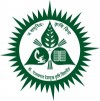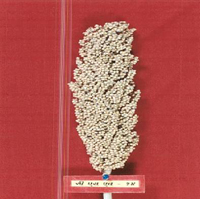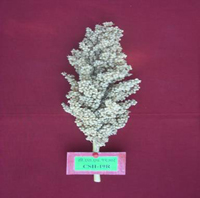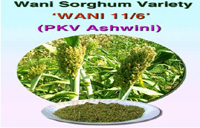|
|
||
|
|
Faculty Information | |
|
|
||
|
|
||
|
|
||
|
|
||
|
|
||
|
|
Research Recommendations |
|
|
|
About Project
During 1975 ICAR New Delhi has sanctioned a small sub center at Akola with one post of Sorghum breeder, three posts of Senior Research Assistant and four posts of Agricultural Assistant on the financial assistance of 25.75 basis. One small scheme with one post of striga physiologist was granted under PL-480 programme in the year 1975. This scheme was in operation for five year and then discontinued. During 1979-80 State Government of Maharashtra approved a scheme on strengthening of Sorghum Research at Akola with some technical and supporting staff.
The systematic research programme with coordinated approach was started from 1980.During 1990 ICAR launched special project on “Promotion of Research and development Efforts on Hybrids in selected crops”. Under this project, Akola center was included in 1991. Two contractual Research Associates and some contingencies were provided under this project. Later on from April., 1999 the said project is converted in NATP Mission Mode Project on “ Development of Hybrids- Rabi sorghum” and only one Research Associate and some contingencies were provided under NATP scheme to this center. This project was discontinued on 31st December, 2003.
From July 1999, an Adhoc project on ‘ Development of multicut forage Sorghum Hybrids’ was sanctioned by ICAR. Under this scheme, one research Associate and some recurring contingencies has been provided to this center .This scheme was sanctioned for the period of three year and commenced from 1st July 1999 and discontinued on 30th June 2003..During June 2000, four NATP schemes under Production System Research ( PSR) mode were sanctioned and allotted to Sorghum research Unit . presently, All India Crop Improvement Project( Sorghum) funded by ICAR and State Non plan ( Kharif Sorghum) schemes are operational at Sorghum Research Unit Dr, P.D.K.V.Akola.
Agro Climatic Information
Sorghum in Vidarbha is cultivated in three Agro – ecological zones viz. Western Vidarbha zone with 700 – 950 mm rainfall , Central Vidarbha zone with 950 – 1250 mm rainfall and Eastern Vidarbha zone with 1250 – 1700 mm rainfall . The cultivation of Kharif sorghum is mostly concentrated in Western, Central and part of eastern Vidarbha zone. Whereas, rabi sorghum is mostly cultivated in buldhan district of western vidarbha zone and Chandrapur district of eastern vidarbha zone.
Infrastructure
The sorghum Research Unit is situated at Central Research Station, Dr. Panjabrao Deshmukh Krishi Vidyapeeth , Akola (M.S) . The land, laboratory and other facilities are available with this research unit .
Mandate and Objectives
The main mandate given to this center was development of hybrids/varieties and package of practices for Kharif sorghum. In addition to that, the center has been concentrating on rabi, forage, sweet sorghum and Wani Sorghum (grain for parching purpose) improvement activities.
Accordingly the research programme has been planned and undertaken with following objectives.
A. Sorghum Breeding
- Breeding early and mid late maturity male sterile lines and Restorer lines for development of potential hybrids.
- Breeding early hybrids/ varieties for drought prone areas and development of new hybrids / varieties with midlate maturity ( 115 to 120 days) for assured rainfall areas.
- Breeding for grain mold tolerance/ resistance.
- Breeding for shoot fly tolerance/ resistance.
Rabi
- Development of rabi adopted, shoot fly & drought tolerant, male sterile lines.
- Development of rabi adopted, shoot fly & drought tolerant and early maturing restorers and varieties.
- To develop rabi adopted, shoot fly tolerant, photo insensitive, drought tolerant hybrids.
Forage Sorghum
- To develop high yielding single cut and multicut forage sorghum hybrids and varieties with good regeneration and better tillering capacity.
- To breed nutritionally better hybrids and varieties having more protein and IVDMD percent.
Sweet sorghum and Wani Sorghum
- Development and evaluation of sweet sorghum varieties for high yield and better quality.
- Development and evaluation of wani Sorghum (Sorghum for parching purpose), for high yield and better quality.
B. Agronomy
- Developing package of practices for newly developed hybrids and varieties
- Developing low cost input management in sorghum.
- Developing sorghum based stable cropping system.
- Studies on integrated nutrient management in sorghum based cropping system.
- ‘N’ economy through green manuring, biofertilizer and organic manuring
C. Entomology
- Screening of sorghum hybrids/varieties against major pests of sorghum.
- Screening of breeding materials for resistance to shoot fly and stem borer
- Evaluation of new insecticides, bio-pesticides and plant products for the control of major pests in IPM program.
D. Plant Pathology
- Screening the breeding material and varieties of sorghum for grain mold and of other major diseases.
- Developing plant protection schedule for control of major sorghum diseases.
Research Activities
A. Ongoing Research work ( Breeding Programme)
Kharif
1. Shoot fly resistance breeding programme.
- Development of new shootyfly resistance male sterile lines
- Development of new shootfly resistance Restorers lines.
- Development of new shootfly resistance hybrids/varieties.
- Development of new grain mold resistance male sterile lines.
- Development of new grain mold resistance restorers lines.
- Development of new grain mold resistance hybrids/varieties.
- Development of new male sterile lines for higher yield & better grain quality.
- Development of new restorer lines for higher yield & better grain quality.
- Development of new hybrids/ varieties for higher yield & better grain quality.
- Development of new male sterile lines for higher yield & better grain quality.
- Development of new restorer lines for higher yield & better grain quality.
- Development of new hybrids/ varieties for higher yield & better grain quality.
- Maintaiance & evaluation of germplasm.
- Development of MS lines & R lines
- Breeding for Single cut & Multi cut varieties / hybrids.
- Evaluation of varieties/hybrids in initial testing trials of University & AISCIP for high yield & better quality.
- Evaluation of varieties/hybrids (single cut) in advance testing trials of University & AISCIP for high yield & better quality.
- Evaluation of varieties/hybrids (Multicut) in initial testing trials of University & AISCIP for high yield & better quality.
- Evaluation of varieties/hybrids (Multicut) in advance testing trials of University & AISCIP for high yield & better quality.
- Studies on response of advanced/pre-released grain sorghum and sweet sorghum genotypes to different fertility levels under rainfed condition.
- Internal diversification in sorghum based inter crop by system.
- Evaluation of promising sorghum hybrids and varieties for intercropping system.
- Studies on tillage, integrated nutrient management, micronutrients management, weed management practices and moisture conservation practices for sorghum.
- Maximization of Kharif sorghum yield. (Grain & Sweet Sorghum).
- Demonstrating the yield potential of improved varieties and hybrids and new technology on famers field through front line demostation.
- Survey for disease situation (Major diseases of sorghum & grain mold) at different locations in the region.
- Screening & evaluation of sorghum genotypes for major sorghum diseases in the region.
(Advance, Initial, State level & AICSIP material). - a. Grain mold.
b. Foliar diseases.
c. Earhead disease. - Screening & evaluation of newly developed genotypes and breeding material against grain mold and other important diseases.
- Identification and Selection of grain mold resistance lines for further exploitation.
Research Achievements
|
Hybdrids Released at National Level |
||||
| Variety and salient features | ||||
|
|
CSH_14
|
|||
|
|
CSH- 19 R
|
|||
|
|
SPH- 388
|
|||
|
|
SPH – 840
|
|||
| Varieties Released at State Level |
||||
|
|
Improved Ramteki
|
|||
|
|
SPV- 669
|
|||
|
|
PKV Kranti ( AKSV – 13 R)
|
|||
|
|
AKSSV – 22
. |
|||
|
|
PKV Ashwini ( W- 11/6)
|
|||
Contact Information
Senior Research Scientist
Sorghum Research Unit
Dr. P.D.K.V. Akola.
Office No. 0724- 2258756









